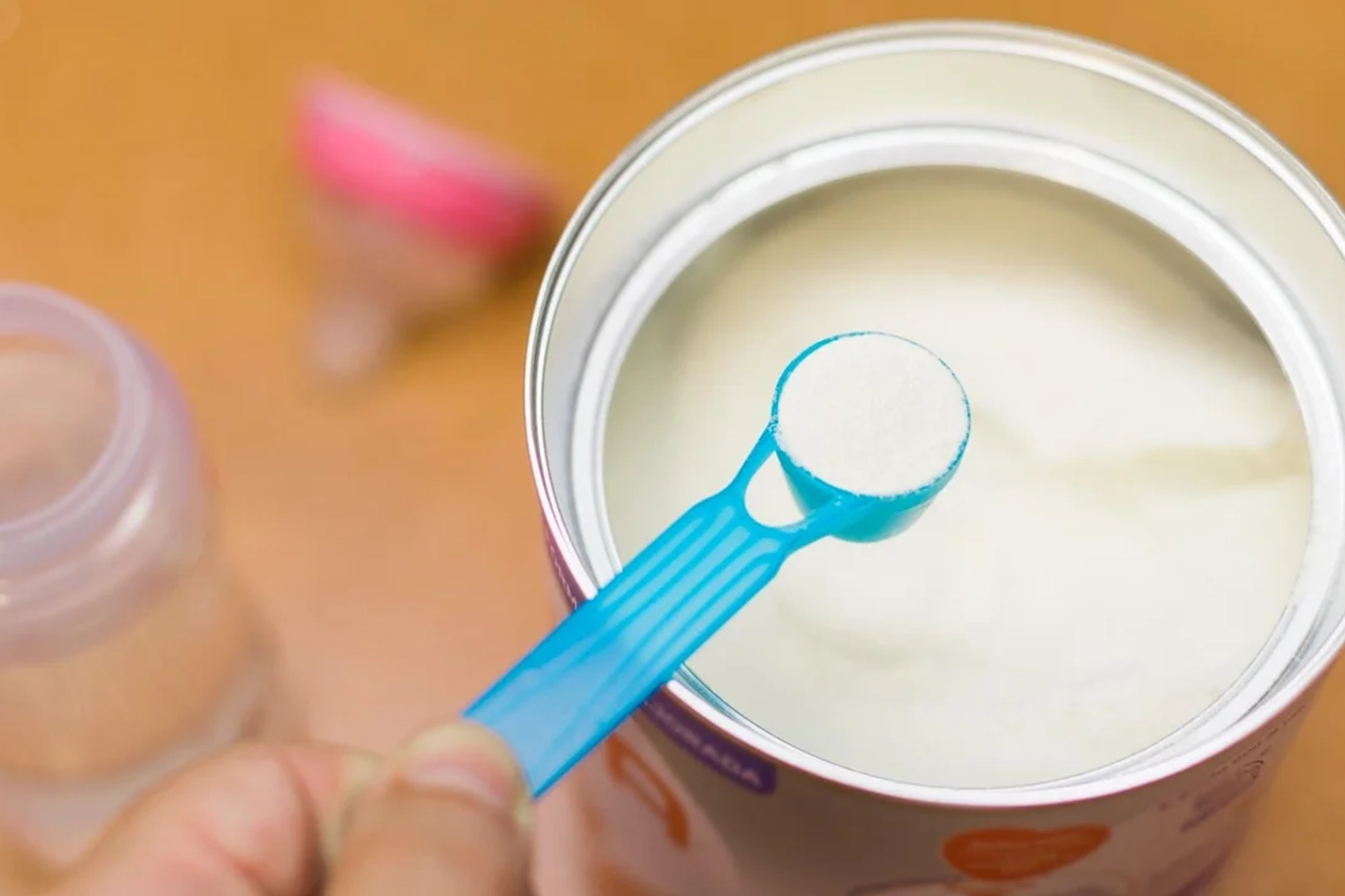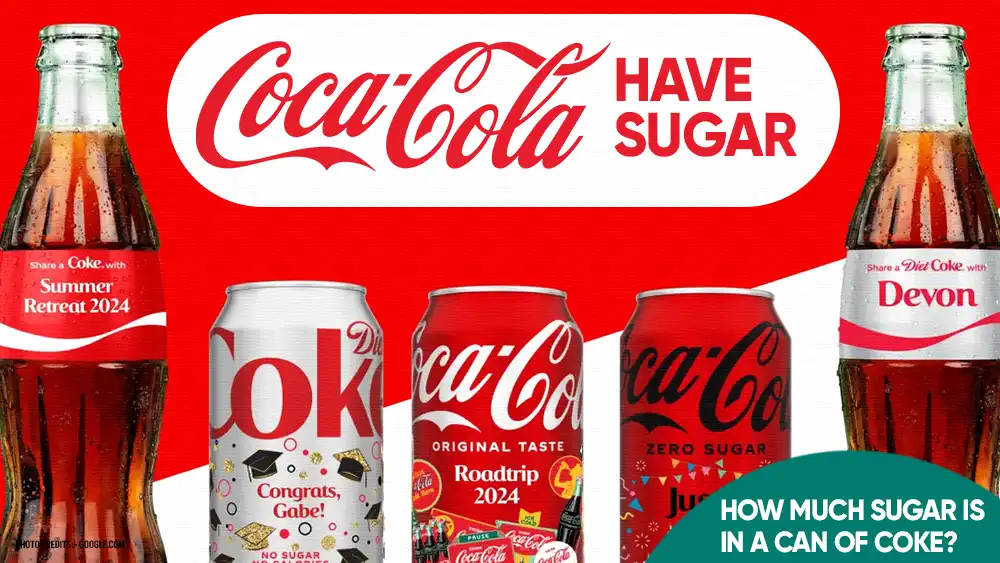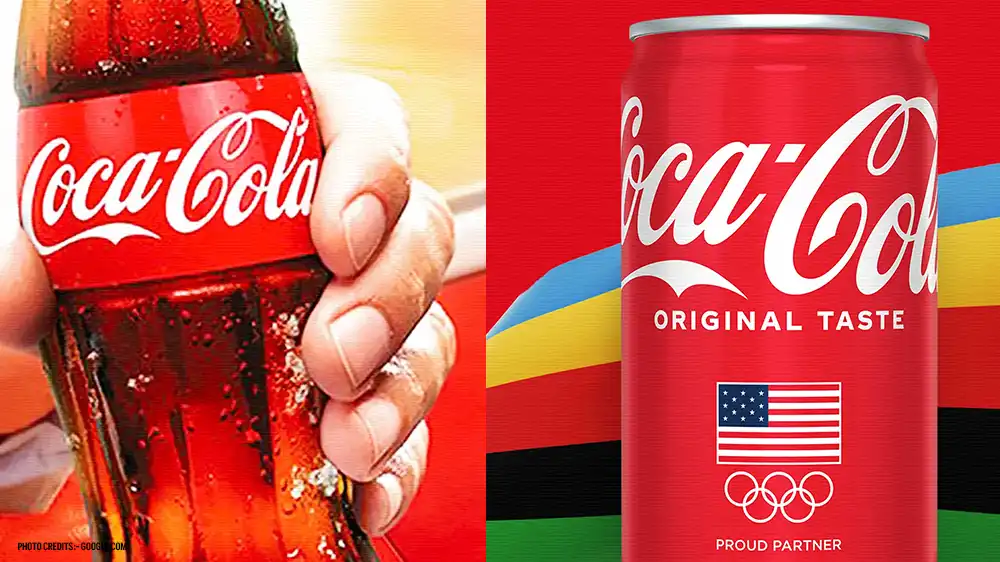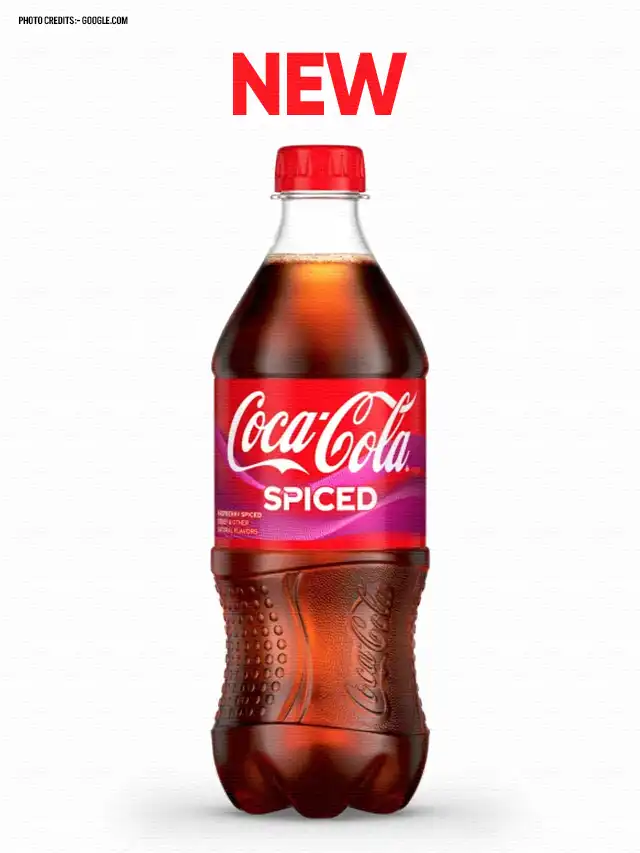
HEALTH BLOG
How Much Sugar Is In A Can of Coke?: Decoding Coke's Sweetness
-
Rahul Priydarss
Discover how much sugar is in a can of Coke. Learn about Coca-Cola’s sugar content and its impact on health. Find out alternatives to high-sugar beverages. Explore the health implications of consuming sugary drinks like Coca-Cola. Get insights into Coca-Cola’s use of high-fructose corn syrup and other sweeteners. Understand moderation tips for balancing your diet with occasional treats. Stay informed about the sugar content in popular beverages.
Introduction: How Much Sugar is in a Can of Coke?:
Coca-Cola, often referred to simply as Coke, is one of the most popular soft drinks worldwide. Known for its refreshing taste and iconic branding, it has become a staple in many people’s diets. However, with the increasing focus on health and nutrition, there’s growing concern about the sugar content in beverages. Understanding the amount of sugar in a can of Coke is essential for making informed dietary choices. This article delves into the specifics of Coke’s sugar content, its health implications, and how it compares to other beverages.
What is Coca-Cola?:
Coca-Cola, commonly known as Coke, is a carbonated soft drink that originated in the United States. It was created in 1886 by Dr. John S. Pemberton, a pharmacist in Atlanta, Georgia. Initially intended as a medicinal tonic, it quickly gained popularity as a refreshing beverage. The drink’s unique flavor comes from a secret recipe, which includes a blend of natural flavors and caffeine. Over the years, Coca-Cola has grown into a global brand, recognized for its distinctive red and white logo and its wide range of product variations, including Diet Coke, Coca-Cola Zero Sugar, and flavored versions. Today, Coca-Cola is enjoyed by millions of people around the world and is a symbol of American culture and global consumerism.

Table of Contents
What is Sugar?:
Sugar is a type of carbohydrate that is naturally found in many foods and is also added to various products to enhance flavor. It is a sweet, crystalline substance that comes in several forms, including glucose, fructose, and sucrose. Glucose and fructose are simple sugars (monosaccharides), while sucrose, commonly known as table sugar, is a disaccharide composed of glucose and fructose molecules bonded together.
Natural sources of sugar include fruits, vegetables, and dairy products, where it is present in varying amounts. However, sugar is often added to foods and beverages during processing and preparation to improve taste, texture, and shelf life. Common added sugars include white sugar, brown sugar, high-fructose corn syrup, and honey.
While sugar is an important source of energy for the body, excessive consumption can lead to health issues such as obesity, diabetes, heart disease, and dental problems. Therefore, understanding and moderating sugar intake is crucial for maintaining a healthy diet and lifestyle.
How Much Sugar Is In A Can Of Coke?:
A standard 12-ounce can of Coca-Cola contains approximately 39 grams of sugar. This amount translates to roughly 9.75 teaspoons of sugar per can. The high sugar content in Coke is a significant concern from a health perspective. Consuming excessive amounts of added sugars, such as those found in sugary drinks like Coke, has been linked to various health issues, including obesity, type 2 diabetes, and dental problems. The American Heart Association recommends limiting daily sugar intake to no more than 25 grams for women and 36 grams for men, making just one can of Coke exceed these guidelines.
From a nutritional standpoint, the sugar in Coke primarily comes from high-fructose corn syrup (HFCS), a common sweetener used in many soft drinks. HFCS is cheaper to produce than sugar derived from cane or beet, contributing to its widespread use in the beverage industry. Despite its popularity, the health implications of consuming HFCS in large quantities are concerning. It provides empty calories without essential nutrients, contributing to weight gain and increasing the risk of chronic diseases when consumed regularly over time. Awareness of the sugar content in Coke and similar beverages is crucial for making informed dietary choices and maintaining overall health.
Origin and History of Coca-Cola:
Coca-Cola, one of the world’s most iconic beverages, has a rich and fascinating history that dates back to the late 19th century.
The Birth of Coca-Cola; The story of Coca-Cola began in 1886 in Atlanta, Georgia. Dr. John Stith Pemberton, a local pharmacist, created a syrup intended for medicinal purposes. Pemberton, who was also a Confederate veteran wounded in the Civil War, was seeking a substitute for his morphine addiction and aimed to create a tonic that would provide energy and alleviate headaches.
Pemberton’s syrup contained a mix of coca leaf extract (which included cocaine, a common ingredient in medicinal tonics at the time) and kola nut extract, which provided caffeine. He took his syrup to Jacob’s Pharmacy in Atlanta, where it was mixed with carbonated water and sold as a fountain drink for five cents a glass.
Naming and Branding: The name “Coca-Cola” was suggested by Pemberton’s bookkeeper, Frank M. Robinson, who also designed the famous script logo that is still in use today. Robinson thought the two “C” letters would look well in advertising.
Early Challenges and Business Growth: Pemberton’s health was declining, and he began selling portions of his business to various partners. One of these partners was Asa Griggs Candler, an ambitious businessman who saw the potential of Coca-Cola. By 1891, Candler had acquired complete control of the Coca-Cola Company for a total of about $2,300.
Candler was instrumental in transforming Coca-Cola from a local tonic to a national brand. He aggressively marketed the beverage, distributing coupons for free samples and plastering the Coca-Cola logo on calendars, clocks, and bookmarks. By the turn of the century, Coca-Cola was available throughout the United States.
Expansion and Bottling: In 1894, the first Coca-Cola was bottled by Joseph Biedenharn, a Mississippi businessman, which allowed the drink to be sold outside of soda fountains. Recognizing the potential for bottled Coca-Cola, Candler authorized bottling operations. In 1899, he granted the first bottling rights to Benjamin Thomas and Joseph Whitehead of Chattanooga, Tennessee.
This decision revolutionized the distribution of Coca-Cola, enabling it to reach a broader audience. Bottling plants quickly spread across the country and later internationally.
The Secret Formula: The formula for Coca-Cola, often referred to as “Merchandise 7X,” has been one of the company’s most closely guarded secrets. While the exact recipe remains undisclosed, it is known to include a mix of natural flavors and essential oils.
Global Expansion and Modern Era: Throughout the 20th century, Coca-Cola continued to grow globally. During World War II, Coca-Cola provided its beverage to American troops abroad, establishing a global presence. This move not only boosted morale but also introduced Coca-Cola to new markets.
After the war, Coca-Cola expanded rapidly into Europe, Asia, and Africa. The company continued to innovate with new products, such as Diet Coke in 1982 and Coca-Cola Zero in 2005.
Cultural Impact and Legacy: Coca-Cola has not only been a commercial success but also a cultural icon. It is often associated with American values and has played a significant role in popular culture, from its famous Santa Claus advertisements to its influence on music and art.
Today in 2024: Today, Coca-Cola is a global brand with a diverse product portfolio, including various soft drinks, juices, teas, and energy drinks. The company continues to innovate and adapt to changing consumer preferences while maintaining its position as a leader in the beverage industry.
The journey of Coca-Cola, from a modest medicinal tonic to a worldwide symbol of refreshment and happiness, reflects a blend of strategic marketing, adaptation, and a bit of mystery surrounding its secret formula.
Variants of Coca-Cola:
Coca-Cola has expanded its product line over the years to cater to a wide range of tastes and dietary preferences. Here are some of the popular variants of Coca-Cola:
1. Classic Coca-Cola: The original Coca-Cola, known for its unique blend of flavors and caffeine content. It is the standard against which all other colas are measured.
2. Diet Coke: Introduced in 1982, Diet Coke is a sugar-free variant of the classic drink. It uses artificial sweeteners, such as aspartame, to provide a similar taste without the calories.
3. Coca-Cola Zero Sugar: Launched in 2005, Coca-Cola Zero Sugar aims to replicate the taste of the original Coca-Cola but without any sugar or calories. It is sweetened with a blend of aspartame and acesulfame potassium.
4. Coca-Cola Cherry: First introduced in 1985, Coca-Cola Cherry combines the classic Coke taste with a hint of cherry flavor. It is available in both regular and zero-sugar versions.
5. Coca-Cola Vanilla: Coca-Cola Vanilla, launched in 2002, offers a smooth vanilla flavor mixed with the classic Coca-Cola taste. It is also available in a zero-sugar variant.
6. Coca-Cola Lime: This variant, introduced in 2005, features a refreshing lime flavor. It is less common but still enjoyed by fans seeking a citrus twist.
7. Coca-Cola Orange Vanilla: Released in 2019, Coca-Cola Orange Vanilla blends the flavors of orange and vanilla with classic Coke. This variant is available in regular and zero-sugar versions.
8. Coca-Cola Raspberry: Coca-Cola Raspberry, launched in limited markets, offers a fruity raspberry flavor combined with the traditional Coke taste. It is less widely available than other variants.
9. Coca-Cola Energy: Introduced in 2019, Coca-Cola Energy is an energy drink version of Coca-Cola. It contains caffeine, guarana extracts, and B vitamins, and is available in regular and zero-sugar versions.
10. Coca-Cola Life: Coca-Cola Life, launched in 2013, is sweetened with a blend of cane sugar and stevia leaf extract, offering a lower-calorie alternative to the original Coke.
11. Coca-Cola Caffeine-Free: Caffeine-Free Coca-Cola offers the same great taste of classic Coke without the caffeine. It is available in both regular and diet versions.
12. Coca-Cola Starlight: Coca-Cola Starlight, part of the limited-edition Coca-Cola Creations line, features a unique flavor inspired by space, with hints of marshmallow and raspberry.
13. Coca-Cola Cinnamon: Released as a seasonal variant, Coca-Cola Cinnamon combines the traditional Coke flavor with a warm cinnamon taste, typically available around the holiday season.
14. Coca-Cola with Coffee: Launched in 2021, Coca-Cola with Coffee blends the familiar taste of Coca-Cola with Brazilian coffee, available in multiple flavors such as vanilla and dark blend.
Ingredients in Coca-Cola Original And The Role of Sugar:
Ingredients in Coca-Cola Original: The original Coca-Cola formula is a closely guarded secret, but the main ingredients are publicly known. Here are the primary components:
- Carbonated Water: The base of the beverage, provides the fizzy sensation.
- High Fructose Corn Syrup (or Sucrose): The primary sweetener used in Coca-Cola. In some countries, cane sugar (sucrose) is used instead of high fructose corn syrup.
- Caramel Color (E150d): This ingredient gives Coca-Cola its characteristic dark color.
- Phosphoric Acid: Adds a tangy flavor and helps to preserve the beverage.
- Natural Flavors: A blend of natural flavors, including oils from various fruits and spices, creating the unique taste of Coca-Cola.
- Caffeine: A stimulant that provides a slight energy boost and contributes to the drink’s flavor profile.
- Citric Acid: Adds a slight tartness and enhances the overall flavor.
The Role of Sugar in Coca-Cola: Sugar plays several crucial roles in Coca-Cola
- Sweetness: The most obvious role of sugar is to provide sweetness, making Coca-Cola enjoyable to drink. The sweetness level is carefully balanced to create a pleasant taste that is neither too sweet nor too bland.
- Flavor Enhancement: Sugar helps to enhance and balance the flavors of the other ingredients. It works in conjunction with the natural flavors, phosphoric acid, and caffeine to create the signature taste of Coca-Cola.
- Texture and Mouthfeel: Sugar contributes to the texture and mouthfeel of Coca-Cola. It gives the drink a slight viscosity, making it feel smooth and satisfying in the mouth.
- Preservation: Sugar acts as a preservative by inhibiting the growth of microorganisms. This helps to extend the shelf life of the beverage, ensuring it remains fresh and safe to drink over time.
- Energy Source: While this is not a primary consideration for most consumers, sugar provides a quick source of energy. This can be appealing for people looking for a quick pick-me-up.

Types of Sugars Used in Coca-Cola:
Coca-Cola uses different types of sugars depending on the region and specific product formulations. Here are the main types of sugars used in various Coca-Cola products.
1. High Fructose Corn Syrup (HFCS): High Fructose Corn Syrup is the most commonly used sweetener in Coca-Cola products in the United States. It is derived from corn starch and contains both glucose and fructose. HFCS is favored for its sweetness, cost-effectiveness, and ease of use in manufacturing.
2. Sucrose: Sucrose, commonly known as table sugar, is used in Coca-Cola products in many countries outside the United States. It is a disaccharide composed of glucose and fructose. Sucrose is often derived from sugar cane or sugar beets. It provides a slightly different flavor profile compared to HFCS and is often preferred for its natural origin.
3. Stevia: Stevia is a natural, zero-calorie sweetener derived from the leaves of the Stevia rebaudiana plant. It is used in Coca-Cola Life, which combines stevia with cane sugar to offer a lower-calorie alternative to regular Coca-Cola. Stevia is known for its intense sweetness and is used in smaller quantities than traditional sugars.
4. Aspartame: Aspartame is an artificial sweetener used in Diet Coke and other low-calorie Coca-Cola products. It is about 200 times sweeter than sucrose and is used in very small amounts to achieve the desired sweetness without adding calories. Aspartame is suitable for those looking to reduce sugar intake while still enjoying a sweet beverage.
5. Acesulfame Potassium (Ace-K): Acesulfame Potassium is another artificial sweetener used in conjunction with aspartame in Coca-Cola Zero Sugar and some other low-calorie products. It is about 200 times sweeter than sucrose and provides a sugar-like taste. Ace-K is often used to enhance the sweetness profile and stability of the beverage.
6. Cyclamate: Cyclamate is an artificial sweetener used in some countries but banned in others, including the United States. It is used in certain Coca-Cola products in regions where it is permitted, providing a high level of sweetness without the calories.
7. Sucralose: Sucralose is a zero-calorie artificial sweetener used in some Coca-Cola products, particularly those aimed at providing a sugar-free experience. It is about 600 times sweeter than sucrose and is known for its stable sweetness in both hot and cold environments.
Comparing Sugar Content with Other Beverages:
When comparing the sugar content of Coca-Cola with other beverages like Pepsi, Mountain Dew, and fruit juices, the differences can vary significantly:
1. Pepsi: A 12-ounce can of Pepsi typically contains slightly more sugar than Coca-Cola, averaging around 41 grams per can. This is about 9.75 teaspoons of sugar, slightly higher than Coca-Cola’s 39 grams.
2. Mountain Dew: Mountain Dew, known for its higher caffeine content and citrus flavor, contains even more sugar than both Coca-Cola and Pepsi. A 12-ounce can of Mountain Dew typically contains about 46 grams of sugar, equivalent to approximately 11 teaspoons.
3. Fruit Juices: Fruit juices can vary widely in sugar content depending on factors such as the type of fruit and whether additional sugars have been added. As a general guideline.
- 100% Fruit Juice: While considered natural, even 100% fruit juices can be high in sugar. For example, a 12-ounce serving of orange juice may contain around 33 grams of sugar, or about 8 teaspoons.
- Fruit Juice Drinks: These often contain added sugars and can have even higher sugar content. Some fruit punch drinks, for instance, can contain up to 45 grams of sugar per 12-ounce serving.
Health Implications of High Sugar Consumption:
High sugar consumption can have significant health implications, affecting various aspects of physical health and well-being. Here are some of the key health implications associated with consuming excessive amounts of sugar.
1. Weight Gain and Obesity: Sugary beverages, including sodas and sweetened juices, provide empty calories with little to no nutritional value. Consuming them regularly can contribute to weight gain and obesity. Excess sugar is converted into fat in the body, leading to increased body mass index (BMI) and potential obesity-related health issues.
2. Increased Risk of Type 2 Diabetes: A diet high in sugar can increase insulin resistance over time, which is a major risk factor for developing type 2 diabetes. Insulin resistance occurs when cells in the body become less responsive to the effects of insulin, leading to elevated blood sugar levels. This can eventually progress to diabetes if not managed.
3. Cardiovascular Health Issues: High sugar intake has been linked to an increased risk of cardiovascular diseases, including heart disease and hypertension (high blood pressure). Excess sugar consumption may contribute to elevated triglyceride levels, reduced high-density lipoprotein (HDL or “good”) cholesterol levels, and inflammation, all of which are risk factors for heart disease.
4. Dental Problems: Sugar is a primary contributor to tooth decay and cavities. Bacteria in the mouth feed on sugars from beverages and produce acids that erode tooth enamel, leading to dental decay over time. Frequent consumption of sugary drinks without proper dental hygiene can increase the likelihood of dental problems.
5. Impact on Mental Health: Research suggests that diets high in sugar may have adverse effects on mental health and cognitive function. Excessive sugar consumption has been associated with mood swings, increased risk of depression, and reduced cognitive performance, including memory and learning abilities.
6. Skin Health Issues: High sugar intake can affect skin health by contributing to the development of acne and other skin conditions. Elevated blood sugar levels may lead to increased production of insulin and androgens, which can stimulate oil production and inflammation in the skin.
7. Nutritional Deficiencies: Consuming high amounts of sugary beverages can displace more nutritious food choices in the diet, potentially leading to nutritional deficiencies. These beverages often provide “empty calories” devoid of essential vitamins, minerals, and other nutrients necessary for overall health.
Alternatives to High-Sugar Drinks:
Choosing alternatives to high-sugar drinks can significantly contribute to maintaining a balanced diet and promoting overall health. Here are some healthier beverage options to consider.
1. Water: Water is the best and most natural choice for staying hydrated. It has zero calories, no sugar, and helps flush toxins from the body. Infusing water with fruits, vegetables, or herbs can add flavor without added sugars.
2. Herbal Teas: Herbal teas, such as chamomile, peppermint, or ginger tea, are soothing and flavorful options that contain no sugar or calories. They can be enjoyed hot or cold and offer various health benefits.
3. Green Tea: Green tea is rich in antioxidants and contains minimal calories and no sugar when consumed without added sweeteners. It provides a slight caffeine boost and is known for its potential health benefits.
4. Sparkling Water (Carbonated Water): Sparkling water or carbonated water provides the fizziness of soda without the added sugars and calories. Many brands offer flavored sparkling water with natural fruit essences for a refreshing taste.
5. Vegetable Juices: Freshly squeezed vegetable juices, such as carrot juice or green juice (spinach, kale, cucumber), can be nutrient-rich alternatives to fruit juices. They contain fewer sugars and more vitamins, minerals, and antioxidants.
6. Low-Sugar or Sugar-Free Sodas: If craving a soda-like beverage, opt for diet or zero-calorie versions. These sodas are sweetened with artificial sweeteners like aspartame or stevia and provide the fizzy sensation without the high sugar content.
7. Coconut Water: Coconut water is a natural hydrator that contains electrolytes like potassium and magnesium. It has a naturally sweet taste with significantly less sugar than most fruit juices and sodas.
8. Milk Alternatives: Unsweetened almond milk, soy milk, or oat milk can be nutritious alternatives to sugary drinks. They provide calcium, vitamin D, and other nutrients without the added sugars found in flavored dairy products.
9. Homemade Smoothies: Blend fresh or frozen fruits with yogurt or milk alternatives to create nutritious smoothies. Control the sugar content by using naturally sweet fruits and avoiding added sugars or syrups.
10. Infused Water or Iced Tea: Infusing water with fruits, herbs, or cucumbers can add natural flavors without the calories or sugars. Similarly, unsweetened iced teas, such as black or herbal teas, can be refreshing and enjoyable alternatives.
Impact on Children and Teens of Coca-Cola:
The consumption of Coca-Cola and other sugary beverages among children and teens can have several impacts on their health and well-being.
1. Nutritional Concerns: Coca-Cola is high in sugar and provides empty calories with little to no nutritional value. Regular consumption can displace more nutritious food choices in children’s diets, potentially leading to nutritional deficiencies and imbalances.
2. Weight Gain and Obesity: Excessive consumption of sugary beverages like Coca-Cola is associated with weight gain and obesity in children and teens. The high sugar content can contribute to an increased intake of calories, which, when not balanced with physical activity, can lead to unhealthy weight gain over time.
3. Dental Health Issues: Sugary drinks, including Coca-Cola, are major contributors to dental problems such as tooth decay and cavities. The sugar in these beverages feeds bacteria in the mouth, which produce acids that erode tooth enamel. Regular consumption without proper dental hygiene can increase the risk of dental decay among children and teens.
4. Impact on Blood Sugar Levels: The rapid absorption of sugar from Coca-Cola can cause spikes in blood sugar levels, followed by a subsequent drop. This can affect energy levels, concentration, and mood, potentially impacting school performance and overall well-being.
5. Behavioral and Mental Health Effects: Some studies suggest a link between high sugar intake and behavioral issues such as hyperactivity and attention problems in children. Excessive sugar consumption may also contribute to mood swings and irritability.
6. Long-Term Health Risks: Habitual consumption of sugary beverages during childhood and adolescence may increase the risk of developing chronic health conditions later in life, such as type 2 diabetes, cardiovascular disease, and metabolic syndrome.
7. Marketing and Social Influence: Coca-Cola and similar beverages are heavily marketed to children and teens through various channels, including television, internet, and sponsorships. This marketing can influence preferences and consumption patterns, potentially promoting unhealthy habits.
8. Educational Opportunities: Promoting awareness of the health risks associated with sugary beverage consumption can empower children and teens to make informed choices about their dietary habits. Educational initiatives in schools and communities can play a crucial role in promoting healthier beverage options and encouraging moderation.
Why Coca-Cola is Better Than Other Local Brands:
Coca-Cola’s global dominance over many local beverage brands stems from several compelling factors. First and foremost is its unparalleled consistency in taste and quality. Across continents, Coca-Cola maintains a uniform flavor profile that has become synonymous with reliability and satisfaction for consumers. This consistency is a testament to the company’s rigorous quality control measures, ensuring every bottle or can delivers the same refreshing experience worldwide.
The brand’s extensive reach and recognition play a pivotal role in its superiority. Coca-Cola’s iconic logo and memorable advertising campaigns have cemented its status as a household name across generations. This global brand recognition not only fosters consumer trust but also contributes to its widespread availability. Coca-Cola’s extensive distribution network ensures that whether you’re in a bustling city or a remote village, a refreshing Coca-Cola is never far away.
Innovation is another cornerstone of Coca-Cola’s success. Beyond its classic formula, the company regularly introduces new flavors and packaging innovations to captivate evolving consumer tastes. This adaptability allows Coca-Cola to remain relevant in a dynamic market landscape while catering to local preferences around the world. Coupled with its robust marketing strategies, which blend tradition with modernity, Coca-Cola continues to resonate with diverse audiences globally.
FAQs about How Much Sugar is in a Can of Coke?:
A1: A standard can of Coca-Cola contains approximately 39 grams of sugar, which equals about 9.75 teaspoons.
A2: Regular consumption of sugary beverages like Coke can contribute to obesity, type 2 diabetes, dental issues, and cardiovascular problems due to the high sugar content.
A3: Healthier alternatives include water, herbal teas, unsweetened sparkling water, and low-sugar or sugar-free sodas. These options provide refreshing choices with fewer calories and less sugar.
A4: Yes, Coca-Cola uses high-fructose corn syrup (HFCS) as a sweetener in many of its products in the United States. Outside the US, Coca-Cola may use sucrose (table sugar) or other sweeteners depending on regional preferences and regulations.
A5: Moderation involves limiting the consumption of sugary drinks like Coca-Cola to occasional treats rather than daily staples in your diet. Being mindful of portion sizes and balancing with healthier beverage choices can help maintain overall health.

-Please remember, to always consult with healthcare professionals or Doctors for personalised advice related to medical conditions.
Conclusion:
Understanding “How Much Sugar is in a Can of Coke?” is pivotal for making informed dietary decisions in today’s health-conscious society. With approximately 39 grams of sugar per 12-ounce serving, Coca-Cola’s appeal as a refreshing beverage is accompanied by significant health considerations. Excessive sugar intake from such drinks has been linked to obesity, diabetes, and dental issues, underscoring the importance of moderation. As consumers navigate beverage choices, awareness of sugar content, particularly from high-fructose corn syrup in Coke, plays a crucial role in promoting healthier lifestyles. Balancing enjoyment with mindful consumption remains key to fostering long-term health and well-being.




